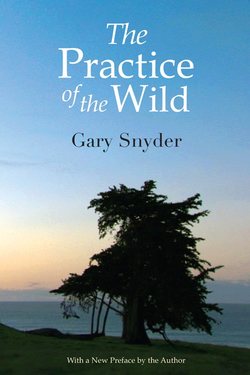Читать книгу The Practice of the Wild - Gary Snyder - Страница 6
ОглавлениеPREFACE
All of us, especially when young, are vexed by the questions: Who am I? What am I doing here? What’s going on? I grew up on a small farm in the Pacific Northwest of North America on Turtle Island. The salmon-rich waters of Puget Sound were nearby, and “What was going on?” was the relentless deforestation of one of the world’s all-time great temperate forests.
The vast expanse of huge trees in the maritime Pacific Northwest was an ecological and botanical phenomenon of enormous proportion. It produced, together with the redwoods somewhat farther south, the largest conifers in the world. Into this marvelous expression of wild process came the Euro-Americans who in short order were dismantling the growth of centuries and transforming it into the houses of the rapidly growing West Coast cities. For me then the question of “Who am I?” was tied to my youthful membership in an expanding society with no sense of the environmental past or future. Our rural homestead was close enough to that original world of wild nature that I could absorb some first-hand teachings from the swamps, woods, and alpine mountains. I augmented those experiences with intellectual studies later and went into a youthful study of history and natural history, with an eye to tracking the course of oppression and exploitation.
At seventeen or so I became a member of The Wilderness Society, an organization which is still doing good work, and a bit later joined the mountaineering club called Mazamas, based in Oregon. I became not only a mountaineer and a seasonal worker in forestry — including doing some logging — but also a defender of the wild. Over the years, I worked and traveled in mountains and forests all over the American West, and then in Japan, and to some degree in Taiwan and Nepal. I started conducting workshops for little groups and classes up and down North America, teaching the disciplines, knowledge, and skills I thought necessary to appreciate the ferocious orderliness of the wild.
Working with people from the outback of Alaska to downtown Manhattan and Tokyo on questions of ecology, endangered species, original societies, East Asian religions, and environmental strategies generated these essays.
Another angle was spiritual. My own path is a kind of old time Buddhism which remains connected to animist and shamanist roots. Respect for all living beings is a basic part of that tradition. I have tried to teach others how to meditate and enter into the wild areas of the mind. As I suggest in one these essays, even language can be seen as a wild system.
A key term is practice: meaning a deliberate sustained and conscious effort to be more finely tuned to ourselves and to the way the actual existing world is. “The world”, with the exception of a tiny bit of human intervention, is ultimately a wild place. It is that side of our being which guides our breath and our digestion, and when observed and appreciated is a source of deep intelligence. The teachings of Buddhism are really mostly about practice and very little theory — though the theory is so engaging that through all of history it has led many people slightly and charmingly astray.
The Practice of the Wild suggests that we engage in more than environmentalist virtue, political keenness, or useful and necessary activism. We must ground ourselves in the dark of our deepest selves. A later collection of essays, A Place in Space, proposes that a good part of that grounding takes place in communities, which exist whether we know it or not within the “natural nations” shaped by mountain ranges, river courses, flatlands, and wetlands.
Nothing said here is to take away from the elegance, the refinement, the beauty, and the intriguing complexity of what we call civilization, especially the sort of civilization that respects quality over quantity and is not simply an excuse for multinational global piracy. I am intrigued by the sense that culture itself has a wild edge. As Claude Lévi-Strauss remarked years ago, the arts are the wilderness areas of the imagination surviving, like national parks, in the midst of civilized minds. The abandon and delight of love-making is, as often sung, part of the delightful wild in us. Both sex and art! But we knew that all along. What we didn’t perhaps see so clearly was that self-realization, even enlightenment, is another aspect of our wildness — a bonding of the wild in ourselves to the (wild) process of the universe.
The impulses that launched me were connected to my being a Euro-American living in the new world, in a semi-wild place. Looking at the planet as a whole, one sees that the issues are not much different anywhere on Earth. The whole world had good forests and much wildlife up until a few centuries ago. Human societies had lots of room, good water, and good soil. And, give or take a few thousand years, we were all living in small communal subsistence cultures for most of human history. Such lives had their drawbacks. But there are lessons and skills that belong to that long history that we have not yet appreciated or brought into our present activities.
The wild — often dismissed as savage and chaotic by “civilized” thinkers, is actually impartially, relentlessly, and beautifully formal and free. Its expression — the richness of plant and animal life on the globe including us, the rainstorms, windstorms, and calm spring mornings — is the real world, to which we belong. I am deeply grateful that I have been able to walk this path, to study with teachers East and West, and to have been able to speak and write my thoughts to whoever would listen.
Gary Snyder 25. X. 98 12 May 2010
